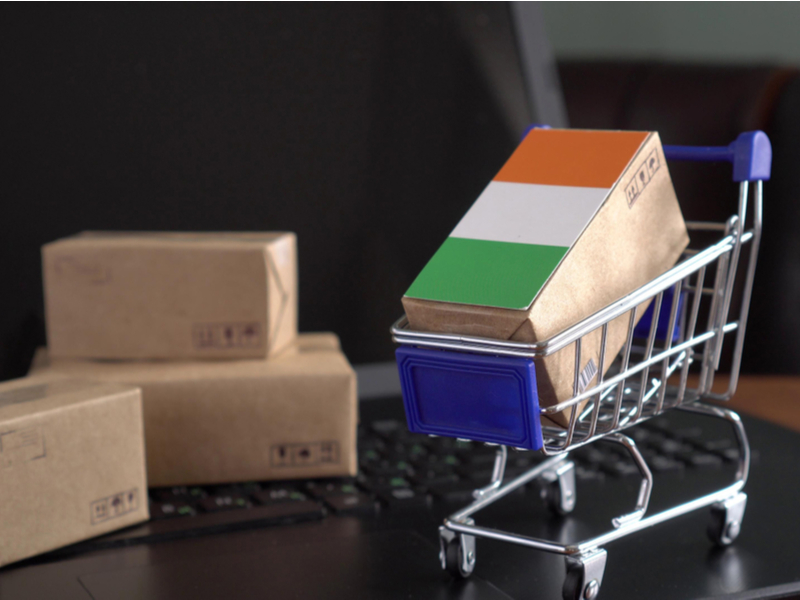As the world continues to adapt to the new normal, Abhijit Niyogi from Tata reveals how retailers are ready to emerge stronger than ever through a digitally transformed and purpose-led approach.
A number of key criteria are continuing to shape the business model of successful retailers and e-tailers of tomorrow.
The need for a safe, seamless and convenient shopping experience, agile and responsive merchandise planning, end-to-end supply chain resilience, the ability to leverage an ecosystem of partners, sustainable and environmentally conscious initiatives, and a culture of continuous innovation.
“The ultimate objective is a seamless and profitable omnichannel experience with hyper-scaled operations”
While many of these criteria have long been the aspiration of retailers worldwide, the pandemic has served as a harsh example of what can happen if these goals go unchecked.
The keys to digital success
Key to the success of many digitally led retailers who managed to weather the pandemic storm, was the combination of a strong business model and strategic investments that could plug the gaps and turn adversity into an opportunity.
For example, one large Dutch retail chain was able to utilise technology and data science to create an extremely efficient replenishment solution that meant they could deliver on their freshness promise to customers.
The solution achieved a staggering 22pc reduction in last-minute shipment changes and a 12% increase in truck space utilisation. Meanwhile another UK-based online retailer of branded goods was able to stay ahead of the curve by challenging the status quo and using the pandemic as an opportunity for rapid transformation.
But whether immediately successful or otherwise, this last year has provided every retailer with invaluable experience in managing the unknown. When coupled with the right advanced technology, this can provide the launchpad to new growth for all.
We are likely to see technology at the forefront in shaping the future of retail. As business leaders take the steps to move away from a product-centric to purpose-led business model, we believe the orchestration of real time data across the value chain using an algorithmic and machine first approach is integral to success.
The ultimate objective is a seamless and profitable omnichannel experience with hyper-scaled operations.
For any retailer about to embark on this journey, there are a number of key steps that should be considered:
- Strengthen the digital core: For a seamless interaction between retail processes in the plan-design-buy and make-move-sell-recycle phases, take the time to plug immediate gaps and consolidate opportunities. The aim is to create a strong digital foundation with scalable, resilient, seamlessly connected systems to build innovative solutions for the future.
- Invest in unified commerce: Orchestrate integrated multichannel customer journeys across channels and ensure that stores are ‘always on’ to drive unique, interconnected micro-experiences.
- Optimise the cost of doing business: Identify any and all scenarios that can leverage AI and automation to detect, notify, execute, and record the completion of actions and to set the tone for seamless, reliable, and effective operations. In taking this step you not only build self-correcting capabilities in systems but also automate frequent business tasks with AI. This includes determining price triggers, initiating price recalculation based on pre-defined conditions, sending the price for review as well as publishing the price to the channels, and so on.
- Harness the currency of information and insights: The retail business requires decisions at every point in the value chain. Success lies in enhancing the depth, breadth, and quality of underlying data sources, democratizing the data, and leveraging sophisticated self-learning algorithms to provide insights at the point of decision making.
- Foster a culture of innovation through partnerships: Strong partnerships enabled by digital platforms can provide limitless access to global talent, capabilities, network innovation, markets, complimentary products, and services where companies no longer need to operate in silos. Foster an ecosystem through these partnerships and drive adoption by making it more understandable, relatable and a core part of your corporate strategy.
From relevant to profitable
A recent study among almost 300 senior business leaders from large enterprises revealed how a number of these key steps are helping retailers reduce costs and retain customers. A relatively large proportion are using core process automation (44pc) and endtoend digital CX (39pc) to reduce costs amid thin profit margins. While digital CX coupled with robust AI (used by 39pc of retailers) is helping to deliver a superior customer experience, a critical strategy for building retail loyalty.
The new emerging thought process is also to build a strong foundation of data and algorithms across the enterprise, utilising data-driven insights to inform key business decisions.
Leading retailers worldwide are already taking advantage to realise exponential growth through algorithmic and purpose-led business models. Now is the best time for retailers to once and for all move the spotlight from ‘relevance of stores’ to ‘profitable retail’.
-
Bank of Ireland is welcoming new customers every day – funding investments, working capital and expansions across multiple sectors. To learn more, click here
-
Listen to the ThinkBusiness Podcast for business insights and inspiration. All episodes are here. You can also listen to the Podcast on:
-
Apple
-
Spotify
-
SoundCloud





